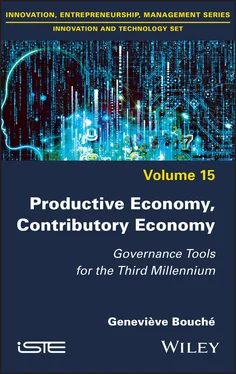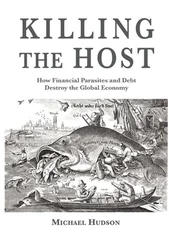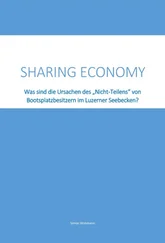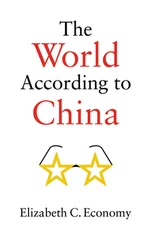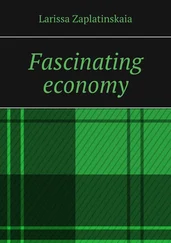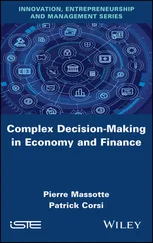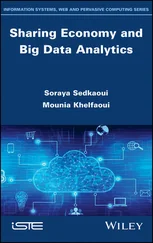This confirms that the single governance model entrusted to, or monopolized by, a supposed “master of the world” is an absurdity, even if, a priori , all people have more or less the same needs. It is preferable to preserve the diversity of societal models in order to promote progress, by combining cooperation and competitiveness.
In this book, we are only interested in the model that could be suitable for France and more globally for Europe.
1.2.2. The cybernetic futurology approach
The period we are ending has been one of short-termism and the search for solutions to problems described in a static way.
To look at the future, we have been content with forecast-based statistics. Statistics tell us about the past. They are rearview mirrors.
We have also used foresight, which is based on scenarios, which we know are the fruit of our imaginations and therefore marked by our fears, our fancies.
Life is often told to us as a succession of coincidences. Those who want to secure an audience tell us of a world that is increasingly VUCA 6. To arouse fear is a way to dominate.
The world is not VUCA, because its evolution is systemic. It results from a succession of trials and errors, combining different mechanisms, the most central of which is homeostasis, itself combined with the process of reproduction.
Antonio Damasio describes it very well in The Strange Order of Things : the smallest living cell has a capacity for homeostasis, that is, in its constantly changing environment, it is constantly able to arbitrate between accommodating changes without evolving or trying to adapt. Evolving represents a risk, but if “not evolving” represents a greater risk, it is better to try to evolve.
It then engages in attempts to evolve according to a process described by Alain Berthoz 7under the dual term of “vicariance” (Berthoz 2013) and “simplexity” (Berthoz 2009): everything begins with “vicariances”, i.e. attempts to adapt to change. The one that proves to be the most acceptable allows the simplexity process to be set in motion. This process generalizes this “good vicariance” and simplifies the traces of previous solutions to similar problems, much as we do in the automobile industry or in computer program chains!
Thus, living beings, however small, evolve and evolve their relationships with their environment. At the time of mating for the reproduction of the species, the beings that carry the most adapted evolution are favored, and thus the evolution and the preservation mechanisms of the species are propagated.
Cybernetic futurology works on the future by looking at the dynamics of the facts and human decision-making processes that shape its progress.
People make decisions all day long, and to do so, they use two frames of reference: the immediate past, in which they have free will, and the deep past, which they have inherited from their lineage. The deep past has more weight than the immediate past, which explains the resistance to change and the dangers of sudden breakthroughs. Hence, in order to understand the future, we must be interested in what has happened and how we arrived at these facts.
Cybernetic futurology is interested in the long term: 30 years, 60 years or 90 years. That is, what the world becomes over the course of successive generations.
It does this by unraveling the significant components of the deep past that influence evolutionary processes and that lead to progress or, on the contrary, to traumas that have blocked evolutionary paths.
It does not construct scenarios, but describes evolutionary processes that are systematically based on the fact that life is stronger than deathand that evolution seems to go from matter to spirituality. Evolution is the result of a relational mechanism between the components of life within Gaia that constantly oscillates between cooperationand competition. It is these oscillations that generate the need to “get out of the crisis”. The decisions that are taken are marked by recent excesses.
This form of futurology is called cybernetic because it looks at the world in motion and not in a static way. What gives us the sensation of chance are the components that we have not perceived.
Cybernetic futurology works in transdisciplinary mode. Working only on the long term, it eliminates the jolts of history.
For example, no matter how Henri IV changed his religion, history records that the stability of “Church/State” was a long journey that continues to this day, for we cannot progress without spirituality.
Scientists are combining their expertise to try to go further back in our history. This is important to understand us, since the future has its roots in our history. Everything, or almost everything, is a matter of system; in this case, we are in a clock whose hands are constantly moving forward, without ever returning to the starting point.
The short video that shows a huge piece of iceberg collapsing into the sea actually shows us the completion of a crack that started many years ago.
This is what is currently happening with global finance, whose foundations go back more than 10,000 years. It is cracking, making strange noises, and then repeated crises… It is functioning more and more poorly, but does not itself propose an alternative model because it only does what it knows how to do. It is not designed to meet any other expectations than the facilitation of primary exchanges between men. Other organs of our life together will have to take over from it or supplement its shortcomings.
1.2.3. The temporality of civilizations
We are beginning to know how civilizations are born and die. Of course, each story is different and contains its share of revolt and sadness. But there is a recurring theme.
In the beginning, there is a tribe that discovers a source of prosperity: water, a plant, a source of energy, an ore, a crossing point, etc. Often several elements at the same time. The tribe organizes itself to optimize the way of exploiting this source of prosperity which it trades with its neighbors.
To protect this source of prosperity, the tribe creates institutions to make the most of the source and to protect those who exploit it. This is how our current system protects property. These institutions also ensure that the greatest number of people benefit from the wealth created through small benefits.
But in the cosmos, and therefore on this earth, everything is in constant motion. The source of prosperity runs out or depreciates. Wealth dissipates. And the population demands its petty benefits. Institutions are called to witness, in vain. Rulers are unable to govern. Then, a pervert takes power by promising what he is unable to give, since the source of prosperity has dried up without hope of return. If he cannot keep his promises, he becomes a dictator and the system collapses, leaving the place to barbarians or an interminable lethargy.
These collapses are often characterized by a kind of destructive “swan song”: the elite abuses its power by overexploiting all remaining resources, giving itself the illusion of preserving its standing, a way of covering its refusal to face reality.
In the words of Arnold Toybee, a specialist in the fall of civilizations, “ Civilizations die by suicide , not by murder”.
A similar process can be seen in the “great families”, those who have made their mark on their time and have accumulated wealth. There is the generation that creates, the one that believes and the one that crunches. The latter finds the wealth it has rather cumbersome and complicated to manage, so it lets it decay on the good advice of predators in ambush!
Читать дальше
